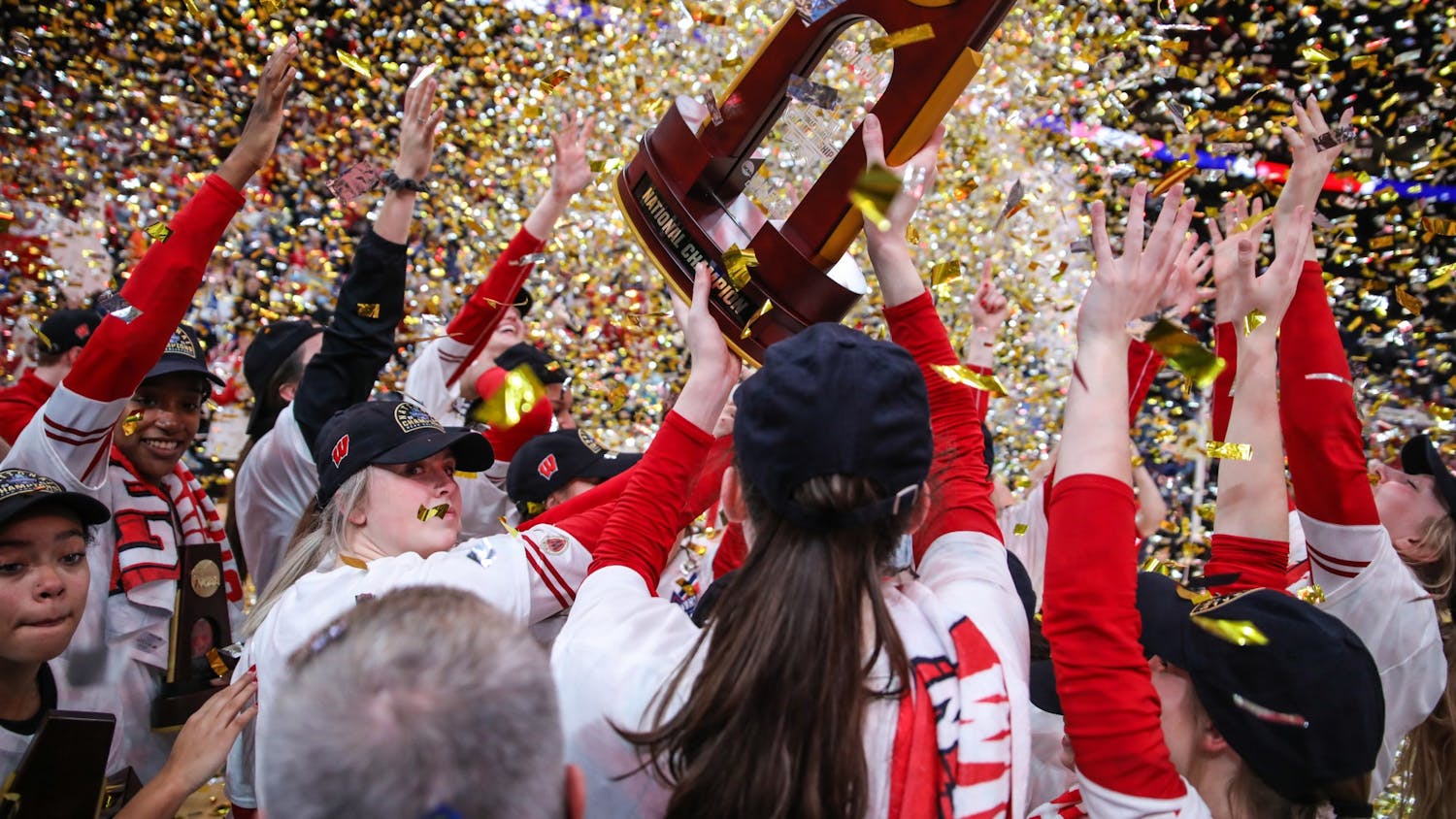Keeping Dave Aranda in Madison for his third year at defensive coordinator was the most impressive move Wisconsin made this offseason. Aranda is a teacher, a motivator and possesses a football mind as sharp as any coach in the nation, and the Badgers will once again find themselves scratching at the cavernous walls of Lucas Oil Stadium this winter because of him.
When Gary Andersen left for the head coaching position at Oregon State in December, the door to the head coach’s office seemingly swung wide open, but it actually cracked just wide enough to allow for Paul Chryst to assume the role he’s ultimately been destined to take. While not overly charismatic, Chryst was the smart choice for athletic director Barry Alvarez to bring on.
Chryst’s path to the head coaching job at Wisconsin is more of a well-maintained suburban sidewalk than a gravel trail cutting through the woods. His excellent stint as UW’s offensive coordinator from 2005-'11 and his deep background as a Badger quarterback in his playing days ultimately earned Alvarez’s trust and made him the clear front-runner when Andersen left.
What was unclear was how the assistant coaching picture would develop. In question was whether Chryst would bring in his own guys, or preserve what Andersen had been cultivating. Chryst set his eyes on the former, as the coaching staff is now populated with his hand-picked candidates, most of whom followed from Pittsburgh to Wisconsin.
Aranda is the lone exception, which has redshirt junior linebacker Vince Biegel, among other members of the defense, glowing.
“That was the biggest thing for me in the offseason was making sure we kept coach Aranda,” Biegel said. “Coach Aranda is a phenomenal defensive mastermind.”
Biegel’s incessant use of hyperbole when speaking of his defensive coordinator is not as far-fetched as it may initially sound. Aranda has built a 3-4 defensive model that has consistently led the Big Ten and is nationally one of the top units in football.
Considering where he was at the end of the 2011 season, Aranda’s rise to one of the premier coordinators in the country is astounding. After serving as Hawaii’s defensive coordinator for two years, Aranda, head coach Greg McMackin and entirety of the Rainbow Warriors coaching staff was fired. In swooped Gary Andersen, a four-year head coaching veteran who needed a defensive coordinator to join his staff at Utah State.
“I was on the couch, man, without a job in Hawaii, which is about the worst place to be without a job [for] a college coach,” Aranda said. “Then Gary called and said there was an opportunity at Utah State, and so I owe him that. I didn’t have a job, we were all fired at once.”
It was under Andersen that Aranda developed his unique coaching methods and made a name for himself.
“I don’t consider myself to be your typical coordinator and Gary allowed me to be who I was, let me be me,” Aranda said.
What Aranda turned out to be was a blessing for a Utah State program badly in need of help on defense The Aggies’ jump from 7-6 in 2011 to 11-2 in 2012 was a byproduct of Aranda’s defensive revamp. Utah State went from allowing 27.9 points per game to 15.4, 4.99 yards per play to 4.33 and it held opponents to a 32.88 year success rate on third downs, down from 35.38 percent the previous year.
Aranda and Andersen developed a tight rapport, so much so that he followed Andersen to Madison in 2013 and struggled intensely with not doing the same when Andersen left for Corvallis.
As it turns out, Wisconsin already had its grasp on Aranda.
“It was difficult not to go with him, from the fact that I was used to him,” Aranda said. “Family, number one, it was best to stay. My wife loves it here, my kids love their teachers, they like their schools, they’re in love with the neighborhood we’re at.”
Of course, the culture of the school played a part in his decision to stick around as well.
“Professionally, I love the kids that are here, the type of kids you get at Wisconsin and the type of effort that they put into it, both academically and athletically is just the college experience, it’s the right way to do it,” Aranda said. "I’m all for it, I want to be around it.”
His final slice of motivation can be attributed to Chryst.
“The third piece to that was making sure the fit was right,” Aranda said. “Coach Chryst, I’ve been impressed with him since the first time we met until now. I’m blessed.”
Now, Aranda’s defense is the strong point of the program heading into the 2015 season. Having allowed just 18.6 points per game since Aranda signed on, good for fifth in the FBS in that time, there’s little reason to believe Wisconsin can’t continue its success, especially given that six starters are back from a year ago. However, Aranda is always open to change, whether it manifests itself in alignments, game planning or personnel decisions, and that’s something he’s baked into his coaching philosophy.
“I think there’s certain guys that [say] ‘hey, this is the way we’re going to do it, this is the way,’ and everything else,” Aranda said of his coaching style. “I’ve never really been like that, it’s more been trying to get ideas and I’ll bring up problems and see what everyone thinks and we’ll try to find the best way. The idea is not that it’s my idea or so and so’s idea, it’s the best idea. Let’s be the best us we can be, and I’ve always kind of thought like that.”
Chryst brings with him a new era of Wisconsin football. He figures to be a mainstay on the sidelines at Camp Randall Stadium for some time, and, with good fortune, Aranda will be right there with him.






